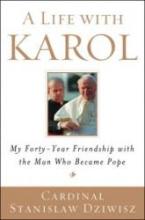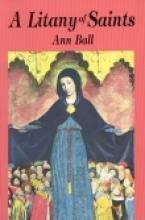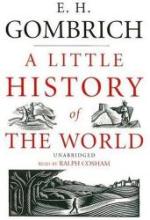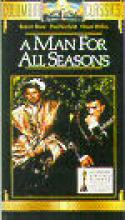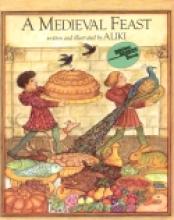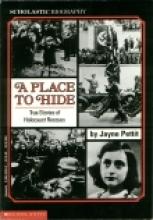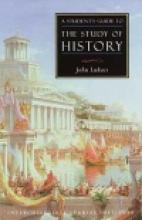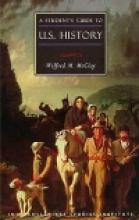History
A Life of Our Lord for Children
Sophia Institute Press has reprinted another gem! In an easy conversational manner, Marigold Hunt tells the story of the Life of Christ. She begins by spending one chapter on the time before Christ, the promise, and the prophets. Then she tells of his birth and young life, his preaching and miracles, and his death and resurrection. The last chapter, His Kingdom is the Church, tells of the Pentecost.
The pictures make this edition really special. There are thirty, done in an almost icon-like style. I have two favorites. The first is of the storm on the Sea of Galilee while Jesus sleeps and the apostles panic. The view is from above. The second is a picture that has a small drawing of each apostle with some symbol to represent who he is. The spot for Judas is darkened. My children had a fun time deciding the name of each apostle based on the symbols. Another interesting detail is that the artist is a homeschooling dad!
When I first saw the book, I wondered at the need of it. If you wanted your children to know the story of Christ, I thought, why not read the Bible. But as I read it I saw that the way Mrs. Hunt tells the story makes a big difference. She claims that she is not telling everything that is in the bible, but a little, so that the children understand and can someday read the bible themselves. It is almost like a conversation she is having, with stops for explaining things, just as I would tell my children about something. For example when she talks about the coming of the Messiah, she explains why He is called the Messiah and the Christ and the King. I thought the storytelling fashion, the second person manner of writing, must be what it was like in the early days of the Church when the story of Christ passed to people by word of mouth, or like in later ages when not everyone read, but yet knew the story of Christ. For this reason I think it would make a great read aloud.
Copyrights 1939/2003
A Life With Karol,
A Litany of Saints
Do you know why we should ask the saints to pray for us? Do you know what happened to St. Christopher? Do you know who is the protector from cancer? If not, then you need to read this book and have your questions answered!
Imprimatur (1992) and Nihil Obstat
Many thanks to Saint Gabriel's for donating this book for review.
A Little History of the World
This is the kind of book that is written for children and yet any adult will enjoy it immensely. We listened to it during a summer trip, and all of our children, from 6 to 20 years old, were enthralled. Reader Ralph Coshan won an audio award for the reading of the book and we have truly grown to love the sound of his voice. Gombrich's A Little History of the World is right up there with Hillyer's A Child's History of the World, but even better--which I never thought I would say, as A Child's History of the World has been a favorite of mine for years. Gombrich himself revised and translated his 1930's text into English before his death in 2002. This is why we have a recent publication in English of a European bestselling history text for children from the 1930s! The text is geared to children a bit older than the Calvert School classic, which is good for a homeschooling family. I love the way the author dealt with a huge Catholic theme: the Reformation! And I love the fact that there is a whole chapter on the Counter-Reformation, which is largely ignored by the American public when studying European history. His account of Saint Ignatius Loyola's story and the founding of the Company of Jesus (Jesuits) makes this volume very Catholic-friendly indeed, which is something to be said for a history book from any major secular publisher. The way the author refers to God, and to the person of Jesus Christ, and to His teachings, is very respectful and wonderfully done. In my research about Gombrich's faith life, I learned that he converted to Christianity from Judaism early in his life. I am currently leading a History 3rd/4th grade small class using Hillyer's text and comparing/complementing it with Van Loon's Story of Mankind. I believe these three volumes together can make up a superb World History curriculum for elementary school! Hedgeschool's First Timeline, done in first and second grades, would be a great place to start. Highly recommended. This will be a great addition to your homeschool audio library.
A Man for All Seasons
A Medieval Feast
A Place to Hide
The stories here include:
- Miep Santrouschitz, who hid Anne Frank and her family in a tiny apartment above a business in Holland.
- Oskar Schindler (subject of the recent movie Schindler's List) who spent his fortune bribing the Nazis in order to save over one thousand Jews from the death camps.
- The story of Denmark, under its remarkable king Christian X, and its resistance against the Nazis. It's difficult to sum up all the remarkable pieces of this story in a few words, but the Danes ferried over 8,000 Jews to safety in Sweden (under the noses of enemy warships) over the coure of three months.
- Andre and Magda Trocme and the city of Le Chambon, France, who provided a place of refuge for many Jews.
- Padre Niccacci of Assisi, Italy, who rescued many Jews, even hiding them in the cloistered convents.
The book is thoughtfully done - accurately and fairly portraying Christian beliefs (and really showing Christianity at it's best - standing up in the face of evil) and delicately handling topics that would be sensitive for children. The author's intent is that "this account of the rescuers and their 'conspiracy of goodness' will serve as a tribute to all of those remarkable people who, in Abraham Foxman's words, 'seemed to be ordinary people living typical lives, but each was blesed with a touch of greatness.'" It is also beautiful to read that the Jewish Foundation for Christian Rescuers (who are largely responsible for the content of the book) have turned around and tried to give aid, where needed later in life, to those who risked so much to accomplish these heroic rescues.
A Student's Guide to the Study of History
From the opening pages, you gain a sense of the personal; you feel that you have picked the brain of your favorite professor over your beverage of choice, as he elaborates on his favorite subject. Since it is a professor speaking, he does not merely "tell" you his opinion, he speaks with academic authority, in both his level of language and the conviction of having taught this for many years.
Since the book addresses the importance of studying, anyone (either high school student, parent/teacher), who is interested in studying history would profit from reading this.
In this student guide, the topic is history. Having recently read several student guides to history, it has become apparent to me that each professor has his own view of what makes history. In this book, Lukacs begins with a "description," not a "definition" of history. Lukacs differs from some historians in that he believes that history includes both the remembered as well as the recorded past. Since he believes that everyone has a contributing role to history and not just significant people or important events, he has a rather broad view of history.
In discussing how only the past is included in history and not the present or the future, Lukacs quotes Soren Kierkegaard. "We live forward, but we can only think backward."
Lukacs goes on to describe the history of history. He begins by explaining the difference between human beings and other living creatures and how only humans have a sense of history. He then goes on to talk about some of our oldest historical records are found in the Old and New Testament. In doing so, he makes some interesting arguments for Christianity. The section alone makes the book priceless.
From there, he discusses other historians throughout time, such as Polybius, and Plutarch. He also distinguishes between chroniclers and historians. He clarifies how the meanings of words, such as barbarian, have changed over time.
In the next section, he shows the development of the "professional historian".
Under the chapter "the methods of history," he stresses how important it is to know how to read in order to study history. By this, he does not mean phonics!
There may be some debate as to what comprises the study of history. Usually, however, historians agree on what are considered the classics in history. In the last chapter, Lukacs recommends various titles the student should read for each period of time. Keeping in mind that the audience for this book is college-age, some of these recommended texts might not be appropriate in their entirety for high school students, because of the sexual references; in particular, Herodotus'Histories and Plutarch's Lives.
I appreciate his footnote that "there can be no good historian who cannot write well." He adds, "Writing well means thinking well." In fact, there are numerous statements throughout the book that I am tempted to highlight: thought-provoking statements for the reader to ponder.
At times, the language can become a bit academic-sounding, and Lukacs likes to get off on tangents; but if the reader sticks with it, he will arrive at the author's point of view and find the wait worthwhile. Altogether, this book not only offers a good list of books to consider reading, but also offers a good explanation of of what is needed to study well: to read and think critically and express one's thoughts intelligently in writing. All this is packed in a mere 49 pages.
A Students' Guide to U.S. History
Rather than consider the study of American history as a boring parade of facts, he implores the reader to consider it "as a drama of incomparable sweep and importance." At the same time, he reminds us that "American history needs to be seen in the context of a larger drama."
Another reason he gives for studying history is because it tells us about ourselves.
Calling it a gallery of windows, there are a number of topics related to the study of history he suggests studying: America and Europe, Capitalism, Founding, Frontier, and many others. He gives an overview of each topic, discusses the proper lens through which the reader should view each topic, and offers additional reading selections. He closes with a list of dos and don'ts for studying and researching history and offers a final list of suggested reading.
Overall, the style of writing although intellectual and challenging at times, is not incomprehensible, stretching our vocabularies with an occasional, unfamiliar word or phrase, such as "opine portentously," "incommensurable," or "cynosure."
Even though the book is intended for college age students, a high school student or anyone for that matter interested in the study of history would benefit from this book. My only caution would be that a parent read any of the suggested fiction titles before handing them to a high school student. Some are not a problem, but others warrant discussion, or may contain parts which would be considered objectionable.
This guide is also available to download for free at the Intercollegiate Studies Institute home page.

